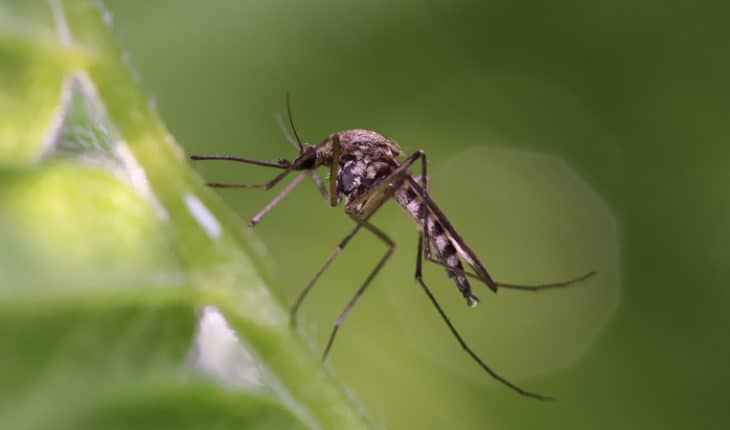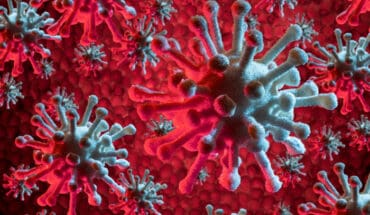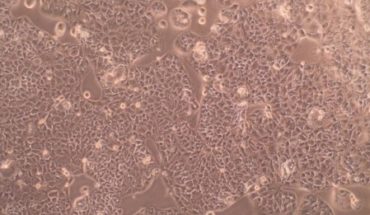Researchers have shown ‘gene drive’ technology, which spreads a genetic modification blocking female reproduction, works in natural-like settings.
The team, led by researchers from Imperial College London, Polo GGB, and Liverpool School of Tropical Medicine were able to suppress populations of a malaria-carrying mosquito in a year-long experiment mimicking natural environments.
This is the first time a gene drive has been shown to be as effective as expected when tested in challenging ecological conditions over a long timescale. The results are published in Nature Communications.
Despite the reduction in malaria over recent decades, there were still 229 million cases of malaria in 2019 – an increase on the previous year – and 409,000 deaths.
Co-lead author of the study Dr Drew Hammond, from the Department of Life Sciences at Imperial College London and the Johns Hopkins Malaria Research Institute, said: “The challenges facing malaria elimination have intensified in recent years, due in part to the spread of insecticide resistance and large gaps in funding for parts of sub-Saharan Africa.
“Sadly, researchers estimate that COVID-19 related disruptions may have doubled mortality from malaria in 2020, threatening a setback of several decades.
“Gene drive is a self-sustaining and fast acting technology that can work alongside existing tools such as bed nets, insecticides and vaccines – and could be a game-changer in bringing about malaria elimination.”
The team selectively targeted the specific mosquito species Anopheles gambiae, which is responsible for most of the malaria transmission in sub-Saharan Africa. There are around 3,500 species of mosquito worldwide, of which a very small fraction can carry malaria, with only a handful of species being responsible for the vast majority of malaria
cases.
The hope is that mosquitoes carrying a gene drive would be released in the future, spreading a modification that impairs female fertility to ultimately reduce the total number of malaria-carrying mosquitoes as a new tool to prevent malaria transmission.
Previously, Imperial researchers demonstrated that their gene drive technology could collapse A. gambiae populations in 7-11 generations as no more offspring were produced once the gene drive had spread to all individuals.
However, to test whether the gene drive would still spread and cause the same population suppression in real-world conditions, the team moved to testing the technology in much larger cages that mimic the mosquito’s natural habitat in the confined laboratory of Polo GGB in Terni, Italy.
Testing in large indoor cages that simulate the natural environment is a critical step of the development pathway suggested by the World Health Organisation and the Foundation for the National Institutes of Health to evaluate the efficacy and safety of gene drive technologies in a physically confined laboratory before open release.
Any mosquito strain that is released into the wild must be able to compete with the wild population if it is to be used for vector control. The large cages used for the study contained hundreds of mosquitoes of different ages, representing a more natural and complex population structure.
The purpose-built cages were also designed to mimic natural conditions in a way that cannot be achieved in small scale testing facilities, enticing the mosquitoes to engage in complex mating, resting, foraging and egg-laying behaviours that would be otherwise impossible in small cages.
This was achieved by controlling not only temperature and humidity, but also by providing natural landmarks and specialised lighting designed to simulate sunrise and sunset and induce swarming.
Modified mosquitoes carrying the gene drive elements were released at initial frequencies of 12.5 and 25 percent of the population, and researchers tracked how quickly this element spread and its impact on female fertility and eventual population decline.
They found that each of the cages (two at 12.5 percent initial frequency and two at 25 percent) showed a rapid spread of the gene drive and complete population collapse within one year.
A major barrier to the development of gene drives has been the emergence of mutations resistant to the technology. However, the strain tested here is the first and only strain to show no signs of resistance in small or large-scale testing – no new natural modifications arose to counteract the effect of the gene drive.
Co-lead authors of the study Dr Tania Persampieri and Paola Pollegioni, from Polo GGB and CNR-Research Institute on Terrestrial Ecosystems, said: “Our large-cage studies provide a greater selection pressure for resistance to the gene drive to arise, as there may be additional ‘fitness costs’ when the mosquitoes exhibit natural mating and
egg-laying behaviours that are impacted in ways we couldn’t predict from small-cage studies.
“However, no modifications arose that could render the mosquito double sex gene resistant to our gene drive, suggesting our modification driving female infertility is robust.”
The large-cage trials are a major step on the journey to releasing gene-drive-carrying mosquitoes into the wild, but the team stress there are still safety and efficacy testing and potential technology developments before a field evaluation could be planned, including more comprehensive resistance testing and environmental risk assessments.
However, they say the data obtained from this study will be invaluable to future modelling that aims to predict the spread of a gene drive in specific regions, such as in the field site in Burkina Faso where a testing facility has been built.
- Gut microbiome could delay onset of type 1 diabetes - 3rd April 2025
- The da Vinci 5 Robot Is Set To Transform Bariatric Care: - 31st March 2025
- Beyond money: the hidden drivers fuelling child food insecurity - 31st March 2025






